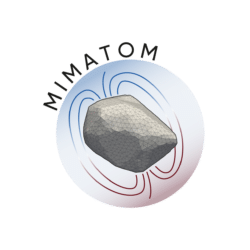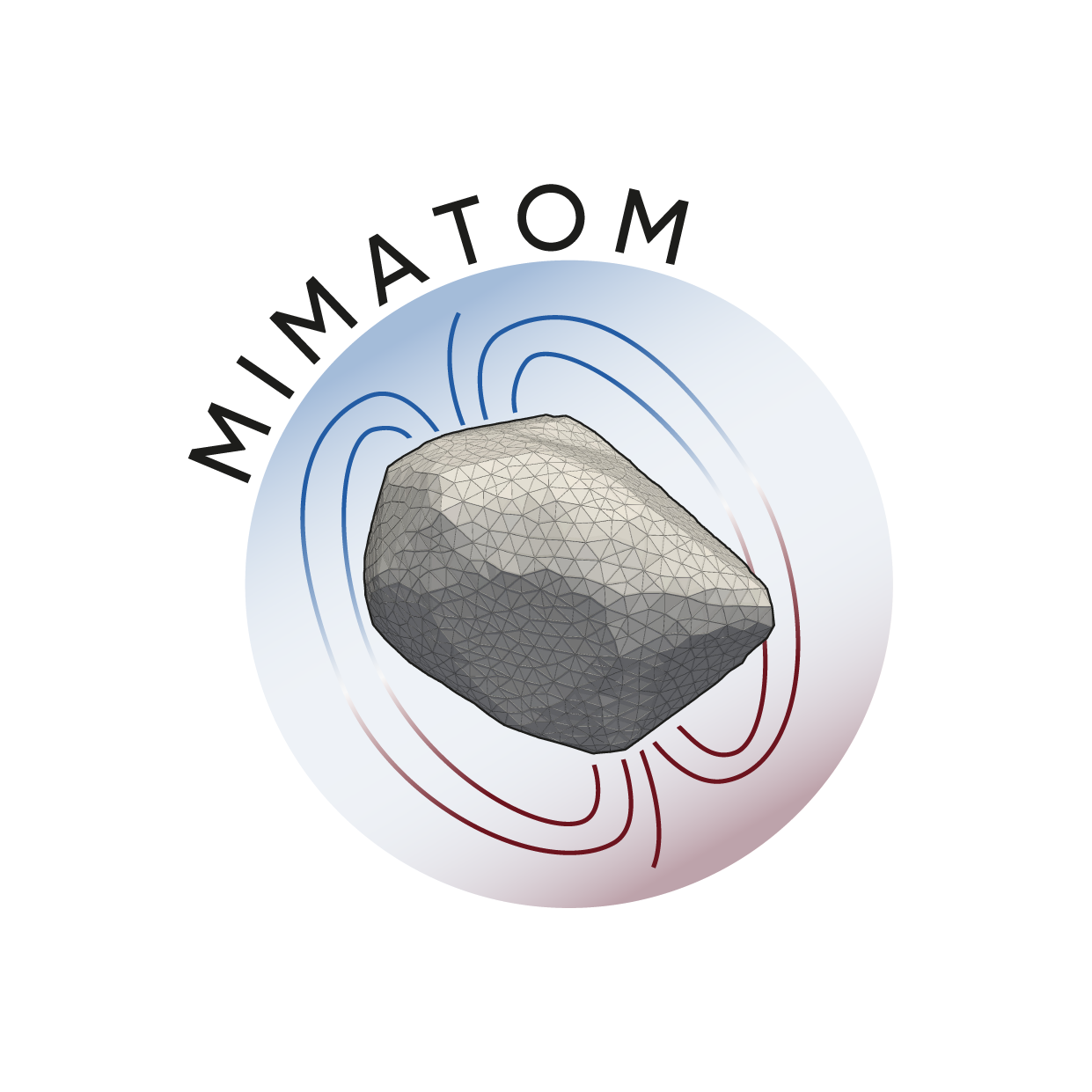Summary
This repository contains the random data generated for obtaining results described in “A first-order statistical exploration of the mathematical limits of Micromagnetic Tomography”. All tested parameters are systematically divided over different folders and subfolders. This dataset contains only .npy files, generated with python version 3.8.8 and numpy version 1.21.5.
Each file can be opened with numpy.load(filename)
The resulting figures are constructed with data of at least 15 iterations; each iteration is stored in a separate folder ‘test_’ followed by the iteration number.
Read me information
File structure
On the highest level, the data is sorted per domain area (200x200x50, 200x200x75, 500x500x75, 500x500x75 mum)) and CT_test. One level lower in the domain area folders, the signal strength ratio files (new_SSR_data_{test}) are found. These files contains the minimally needed signal strength (SSR) of a grain in order to have 99% of the grains pass an uncertainty ratio of 1, 3, 5, 10, or 20%. The number at the end of the file indicates which randomly generated datasets were used to obtain the SSR. E.g. the results in new_SSR_data3.npy contains the data from the folders test_1, test_2, and test_3. Each row in the file contain the parameters and the SSR matching these parameters:
– 1st column: Sampling interval of the surface magnetometry scan (in \mum)
– 2nd column: Noise level of the surface magnetometry scan (in nT)
– 3rd column: Grain density of the sample (in grains/mm^3)
– 4th column: Uncertainty ratio as defined by Out et al. (2022)
– 5th column: Percentage of grains with indicated uncertainty ratio for given SSR in 6th column
– 6th column: Signal strength ratio (V/(R^3d)) as defined by Out et al. (2022)
Besides the SSR files, there are 20 test folders located in order to obtain a statistically relevant trend. Each test folder contains a folder for every different combination of sampling interval (1, 2, 4, or 5 \mum) and grain density (2500, 5000, 10000, 25000, 50000, 75000, 100000 grains/mm^3). Only the folders representing a 1 \mum sampling interval contain files representing the position and size of the cuboids per grain (org_cuboid_coordinates) and the original (ground truth) magnetization of the grains (org_magnetization), because these do not change for different sampling intervals. The org_cuboic_coordinates file contains:
– 1st column: x-coordinate of the center of the cuboid (in meters)
– 2nd column: y-coordinate of the center of the cuboid (in meters)
– 3nd column: z-coordinate of the center of the cuboid (in meters)
– 4th column: half width of the cuboid in the x-direction (in meters)
– 5th column: half width of the cuboid in the y-direction (in meters)
– 6th column: half width of the cuboid in the z-direction (in meters)
– 7th column: index number indicating the grain the cuboid belongs to
org_magnetization contains per row the magnetization of one grain, e.g. the first row contain contains the magnetization of the grain with index 1. Each column contains:
– 1st column: magnetization in the x-direction
– 2nd column: magnetization in the y-direction
– 3rd column: magnetization in the z-direction
Each folder contains four folders representing the noise level of the surface magnetometry scan (5, 20, 50, or 100 nT). Only the noise_5 folders for the 200x200x50 and 200x200x75 domains contain a file representing the normalized covariance matrix (so ones on the diagonal) of the inversion problem (norm_covariance). Each folder contain the following 7 files:
– forward_field: contains the magnetic field (in Teslas) that would be produced by the calculated magnetization of all grains
– grain_mag: contains the inverted magnetization of each grain per row. The first column represents the index value of the grain, second to fourth column contains the magnetization in the x, y, and z-direction
– key.txt: contains the index numbers of the grains which are present in the inversion
– Magnetic_field: magnetic field (in Teslas) contaminated by noise and solved by the program to obtain the magnetization per grain
– norm_ang3: the first three column contain per row the magnetization of a grains in spherical form (norm in Teslas, theta and phi in degrees). The fourth column contains the percentual deviation from the magnetization norm (see Out et al., 2022)
– saved_sigma: contains the standard deviation of the magnetic flux field (in Tesla/m^2)
– sigma: contains the standard deviation of the calculated magnetization per grain on one row. Each row contains the standard deviation (in Teslas) in the x, y, and z-direction
Extra tests
Besides the four main files containing the domain areas, a CT_test folder is also present. This folder contains files used to investigate the influence of the CT resolution (set at 10^{-6} \mum) on the uncertainty of the solution. The ‘blank’ files contain the results of all grains. The MicroCT folder contains per test (15 tests total):
– dip_mag: contains the inverted magnetization for grains visible by the MicroCT for each test, so the volume should be larger than 10^{-18} m^3. The first column contains the index of the grain, the other three columns the magnetization in the x, y, and z-direction
– key: contains per row the index of the grain present in the inversion and large enough for the MicroCT to be picked up
– magnetic_field: magnetic field (in Teslas) contaminated by noise and solved by the program to obtain the magnetization per grain
– orgdip_mag: contains the original magnetization (ground truth) of the grains per row. Each row contains the magnetization in the x, y, and z-direction
– position: contains the position of the grains (in meters). The first three columns contain the x, y, z-coordinates of the center of the grain, column 4 to 6 contain the half width of the grain in x, y, and z-direction, the 7th column contains the index number of the grain.
– sigma: contains the standard deviation of the calculated magnetization per grain visible by a resolution of 10^{-6} \mum. Each row contains the standard deviation (in Teslas) in the x, y, and z-direction
– blank_dip_mag: contains the inverted magnetization for all grains. This functions as a background for the result obtained by applying the resolution restriction. The first column contains the index of the grain, the other three columns the magnetization in the x, y, and z-direction
– blank_key: contains per row the index of all grains
– blank_sigma: contains the standard deviation of the calculated magnetization per grain on one row. Each row contains the standard deviation (in Teslas) in the x, y, and z-direction




